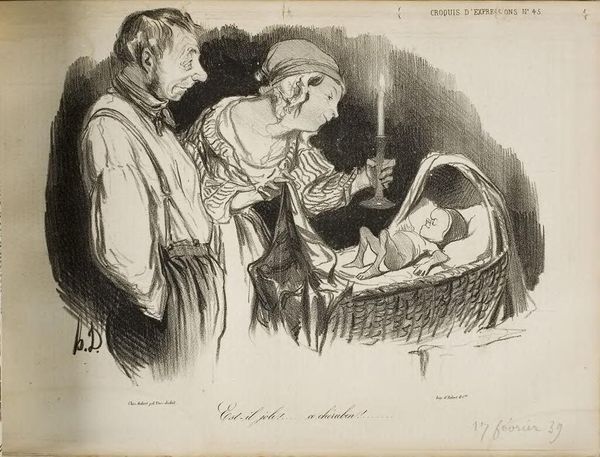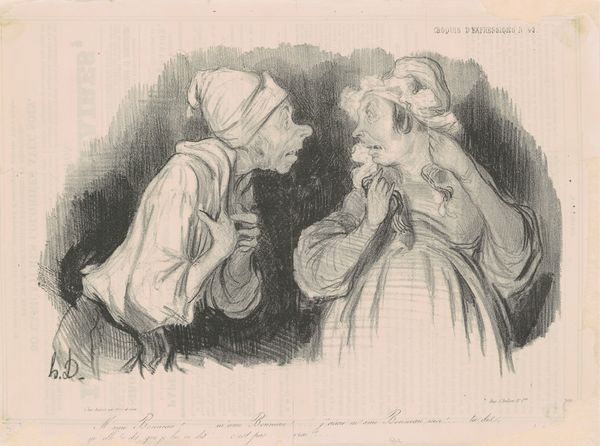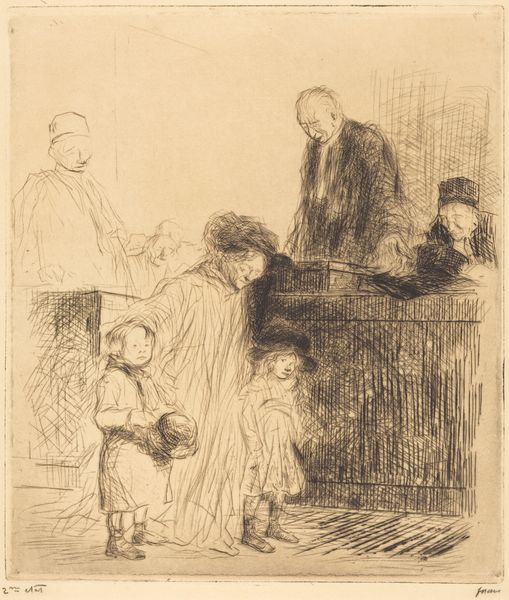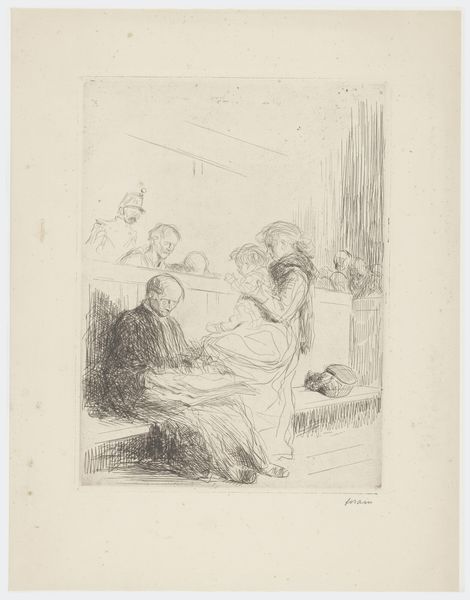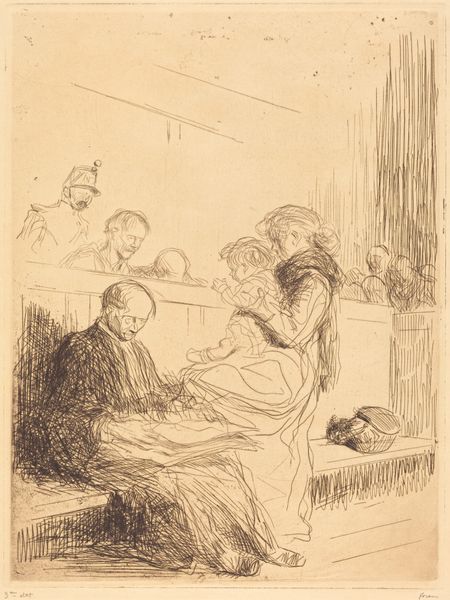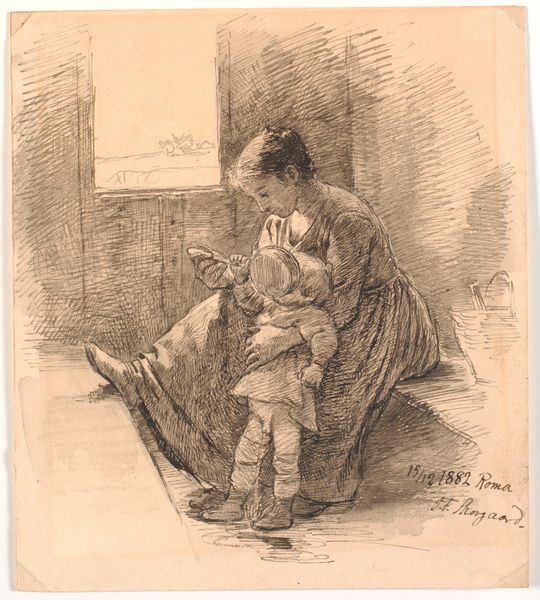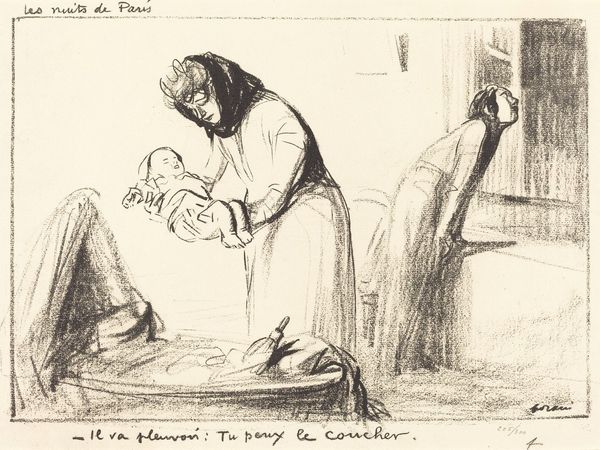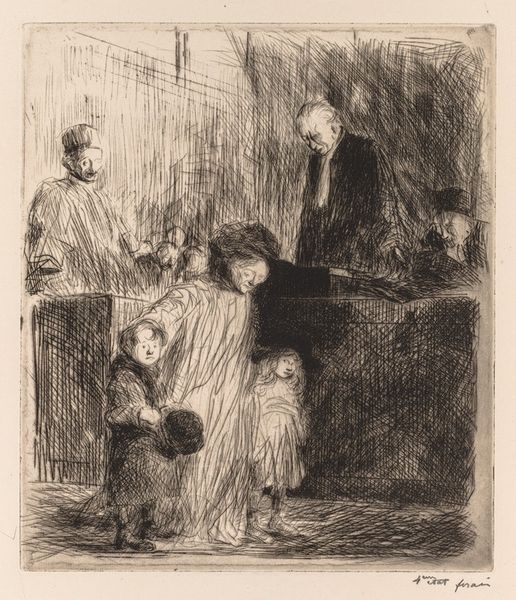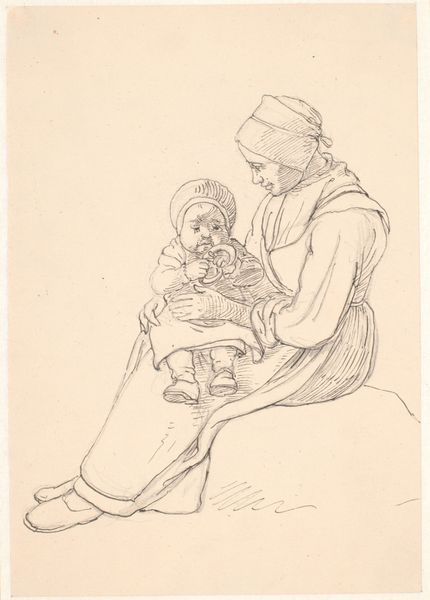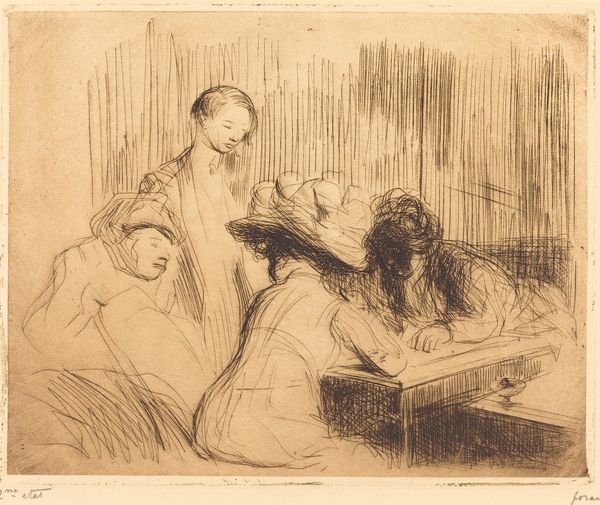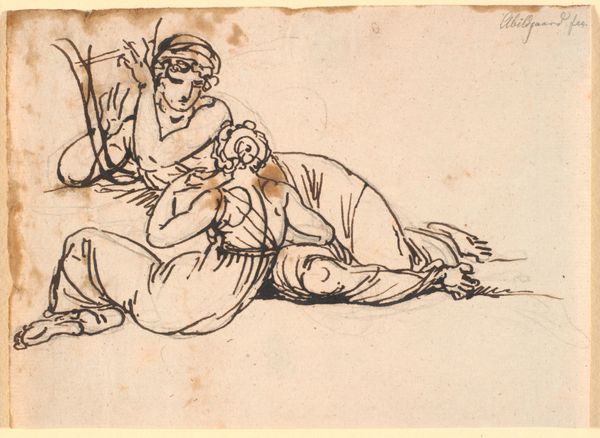
lithograph, print, pen
#
portrait
#
lithograph
# print
#
caricature
#
cartoon sketch
#
figuration
#
romanticism
#
pen-ink sketch
#
pen
#
genre-painting
Copyright: National Gallery of Art: CC0 1.0
Editor: This is "Est-il joli!... ce chérubin!..." by Honoré Daumier, created in 1839. It's a lithograph, so a print. There's a sort of domestic scene, a mother and father looking at their baby. It has a gently satirical feeling, something in their expressions. How do you interpret this work? Curator: The lamp casts an intense light, like a spotlight illuminating something precious, or perhaps something staged. "Chérubin" refers to a cherub, but it's a term of endearment here, of course, and dripping with irony, perhaps? This image speaks to the tradition of the *vanitas*, reminding us of the transience of life even as we celebrate new beginnings. The baby is, after all, vulnerable. Editor: I see what you mean about the staged feeling, and it does have an allegorical tone, contrasting affection with vulnerability. How do the individual poses contribute to this tension? Curator: The parents, with their exaggerated features, appear almost grotesque. Is this about pointing to how we blindly dote on our offspring, losing sight of proportion and perspective? It might be that Daumier is pointing towards societal delusion. Is it affection, or vanity? Editor: So, is the "cherub" less about the baby and more about the parents' distorted perception of it? Curator: Precisely! Notice also how the parents dominate the composition, overshadowing the child in the crib. In art historical terms, darkness, light, and familial roles are all important. This resonates with familiar themes, touching our emotional chords of cultural continuity but with a Daumier twist. It's a striking inversion of Madonna-and-child imagery. Editor: That makes a lot of sense, especially thinking about how he flips conventional symbolism. Curator: Absolutely. Seeing how he repurposed these ingrained archetypes makes this so interesting. The lamp, which could have meant nurturing care, really turns out to be an element to expose irony. Editor: It really changes how I see the piece, from just a simple domestic scene to something much more layered.
Comments
No comments
Be the first to comment and join the conversation on the ultimate creative platform.
